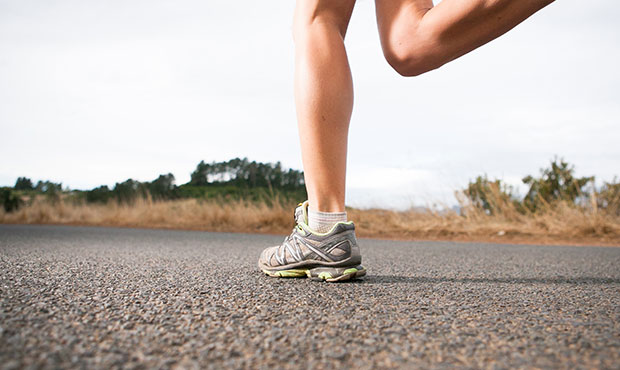
There’s a common debate that’s keeping running experts on their toes. What’s best when it comes to running form: Midfoot or forefoot striking? Or is your own natural gait the ideal form?
While this debate rages on, there are several key running form ingredients that experts do agree on. And, spoiler alert: They include more than just footstrike.
Looking at Biomechanics
The word biomechanics gets thrown around a lot in the running community, but what does it really mean? Essentially, it’s the physics of what your body does while you are running.By studying the biomechanics of running, scientists generally agree that there is a cycle to the running gait that consists of three parts: the stance phase, the swing phase and the float phase. When one leg is in the stance phase, the other is in the swing phase. The float (or flight) phase is when neither leg is in contact with the ground.
When it comes to where your foot lands during the stance phase, there are three general camps that runners fall into: the forefoot, the midfoot or the heel. This is typically where most of the running form debate divides coaches and runners alike.
While heelstrikers have commonly been told they are more prone to injury—and in some cases, less efficient—some experts are starting to believe that your own natural running form is the best suited for your body.
“We’re all a bit different, so what’s efficient and mechanical for you might be awkward for me,” says Mason Cathey, New Balance Florida representative and former professional runner.
And others agree that the “right” style might not be one-size-fits-all.
“Trying to conform to a taught style or specific way to run can be very difficult, and in my opinion, has no guarantee of making you 'better' as a runner,” says Jon Noland, a running coach and Team USA athlete. “But there are certainly some good foundational principles of running when it comes to form that all runners should look to emulate.”
Posture
When it comes to running posture, a tall spine with your head and chest up is the best. As you run, keep your gaze ahead and scan the horizon; this will help you stand naturally. This will also help avoid what running coaches have dubbed “sitting in the bucket.” This is common when a runner becomes tired and pushes his or her hips back instead of forward.A good exercise to incorporate before and during runs is to simply raise your arms above your head. This will remind you of where your body should naturally line up from top to bottom.


